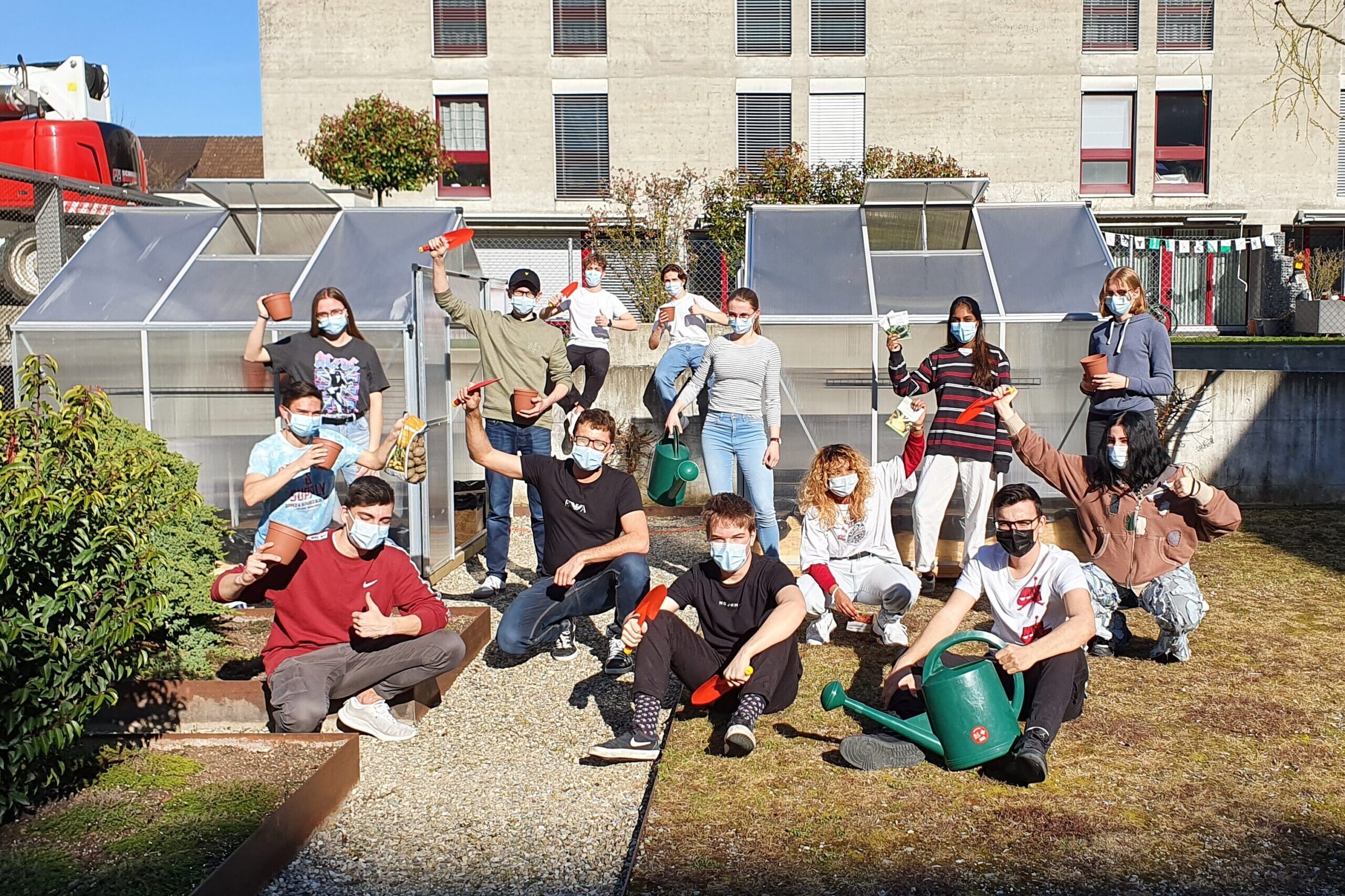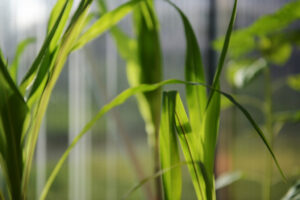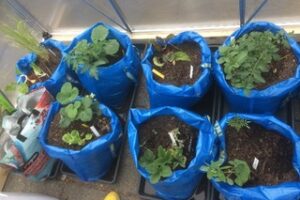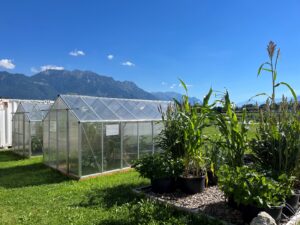Invited by ETH Zurich, we took part in the climate garden project. Additionally, we attended the mycorrhiza workshop, where we investigated the symbiosis between mycorrhizal fungi and plants.
To do so, we were performing some gardening tasks first. We planted sugar beet, hemp, sweetcorn, sunflower, millet, cucumber, tomato, pole bean, and cabbage turnip. It was interesting to plan the whole project, and we realized that the gardening tasks were not as easy, as we first thought. How deep do the seeds need to be planted into the soil? How large should the distance to the neighbouring plants be? How do we water restrained (70%) and excessively (100%)? After several logistical challenges we managed to build a structured garden. It was a pleasurable change from the conventional school lessons.
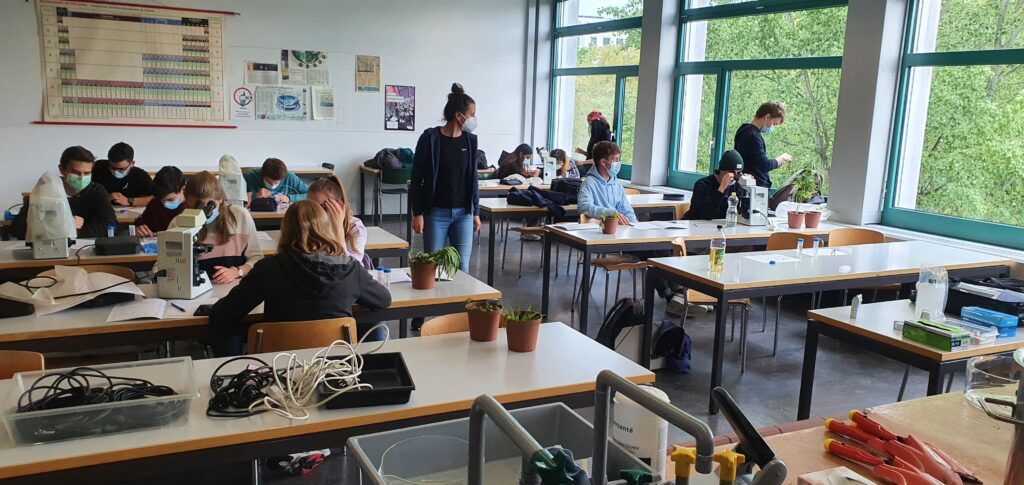
A few weeks later we already saw first effects, which were better than we expected. Six weeks after sowing we took samples for the workshop. These we were investigating for mycorrhizal fungi, a microorganism able to form a symbiosis with plants. Under the microscope we were looking for the fungus and compared the plants with mycorrhiza to such without symbionts in their roots. The differences were astounding, and it is interesting that this symbiosis is very frequent in nature. The teachers found the collaboration with the personnel of the climate garden project and the apprentices to be instructive. The apprentices could experience and conduct various techniques, ranging from gardening tasks, weekly observation and recording of plant growth in the greenhouses to researching in the mycorrhiza workshop.
Authors (original text in German): Manuela Wolfisberg, Mario Danioth
Teachers: David Meier, Sandra Grenacher


